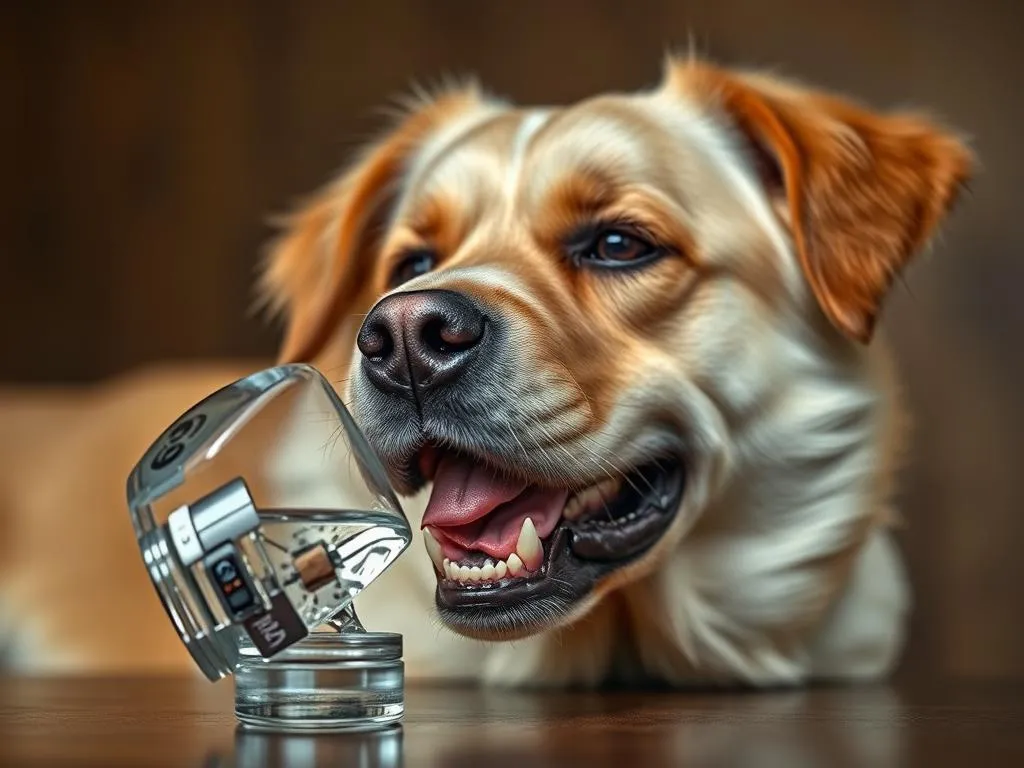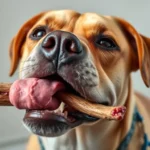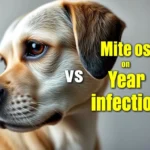
In the unfortunate event that my dog ate glass, it’s crucial to understand the potential risks involved. Glass ingestion can lead to serious health issues, including internal injuries, infection, and in extreme cases, it can be life-threatening. Immediate veterinary care is essential to ensure your dog’s safety and health.
Understanding the Risks
Types of Glass Dogs Might Ingest
Dogs can ingest glass from various sources, and the type of glass can significantly impact the risks involved. Common sources include:
- Broken glass from bottles: These can break easily and leave sharp shards that can injure your dog’s mouth, throat, or digestive tract.
- Glass shards from household items: Items like picture frames or glass decorations can shatter, posing a danger to curious dogs.
- Glass from windows: If your dog jumps or bumps against a window, it can result in broken glass that they may inadvertently consume.
The risks associated with ingesting glass vary based on the size and type of glass. Small shards may cause minor cuts, while larger pieces could lead to more severe complications, including perforations in the stomach or intestines.
Symptoms of Glass Ingestion
Recognizing the symptoms of glass ingestion early can be crucial in mitigating damage. Common signs include:
- Physical signs: Watch for vomiting, lethargy, or a lack of appetite. Your dog may also exhibit signs of pain, such as whining or pacing.
- Behavioral changes: If your dog is avoiding food, seems unusually quiet, or is hiding, these could be indicators of distress.
- Urgent symptoms: If your dog experiences difficulty breathing, excessive drooling, or bloody vomit, seek emergency veterinary care immediately.
Immediate Actions to Take
Assessing the Situation
If you suspect that my dog ate glass, the first step is to assess the situation.
- Determine the amount and type of glass ingested: If you can, try to identify what kind of glass it was and how much your dog may have consumed.
- Evaluate the dog’s current condition: Check if your dog is in distress. Are they showing any signs of pain or discomfort?
When to Contact a Veterinarian
Certain indicators warrant an immediate visit to the vet:
- Signs of distress: If your dog is exhibiting severe discomfort, difficulty breathing, or signs of shock, you should seek help right away.
- Known ingestion of sharp glass: If you witnessed your dog eating glass, do not wait to see if symptoms develop.
When preparing for your vet visit, gather as much information as possible, including what your dog ingested, when it happened, and any symptoms you’ve observed.
First Aid Measures at Home
While waiting for veterinary help, here are some do’s and don’ts to consider:
- Do not induce vomiting unless instructed by a veterinarian. Inducing vomiting can cause more harm, especially with sharp objects.
- Avoid feeding your dog anything, as it could complicate the situation.
- Transport your dog safely to the vet. If your dog is panicking, try to keep them calm. Use a crate or a leash to secure them for the trip.
Veterinary Evaluation and Treatment
What to Expect at the Vet
Once at the veterinarian’s office, expect a thorough examination. Common procedures include:
- Physical examination: The vet will check for signs of pain or distress.
- X-rays and ultrasound: These diagnostic tests can help identify the location and extent of any internal injuries.
Treatment Options
Treatment will depend on the severity of the situation:
- Surgical intervention may be necessary if there are injuries or blockages in the digestive tract.
- Non-surgical options could include medications to manage pain and inflammation.
- Observation: In some cases, your dog may need to be hospitalized for a period to monitor their condition.
Recovery Process
After treatment, following your veterinarian’s instructions is crucial for recovery:
- Post-treatment care: Administer any prescribed medications and monitor your dog for any changes in behavior or health.
- Signs of complications: Watch for vomiting, unusual lethargy, or signs of pain, and contact your vet if any of these arise.
Prevention Strategies
Creating a Safe Environment
To prevent future accidents, consider these tips for dog-proofing your home:
- Store hazardous materials safely: Keep glass items, such as bottles and decorative pieces, out of reach.
- Use secure trash cans: Ensure that your garbage is dog-proof to minimize scavenging opportunities.
Training Your Dog
Training can significantly reduce the likelihood of scavenging behavior:
- Teach commands: Commands like “leave it” can help prevent your dog from picking up dangerous items on walks.
- Supervise during walks and playtime: Keeping a close eye on your dog can help you intervene if they attempt to ingest something harmful.
Regular Vet Checkups
Routine veterinary visits play a vital role in maintaining your dog’s health:
- Importance of routine health checks: Regular checkups can help catch potential health issues early and provide opportunities for professional advice on pet safety.
- Prevent future accidents: Discuss any behavioral concerns or environmental hazards with your vet during these appointments.
FAQs About Dogs and Glass Ingestion
Common Concerns
-
What if my dog seems fine after eating glass?
Even if your dog appears fine, it’s best to consult with your veterinarian. Internal injuries may not show immediate symptoms. -
Can dogs digest glass?
No, dogs cannot digest glass. Glass can cause serious internal injuries, so medical attention is necessary. -
How long should I wait before seeking help?
If you know your dog has ingested glass, do not wait for symptoms to appear. Contact your veterinarian immediately.
Conclusion
Understanding the risks associated with my dog ate glass is critical for any dog owner. Recognizing symptoms, knowing when to seek help, and taking preventative measures can make a significant difference in your dog’s health and safety. Always remain vigilant and proactive in ensuring a safe environment for your pet, and never hesitate to reach out to your veterinarian in emergencies. Your dog’s well-being is worth every effort.









